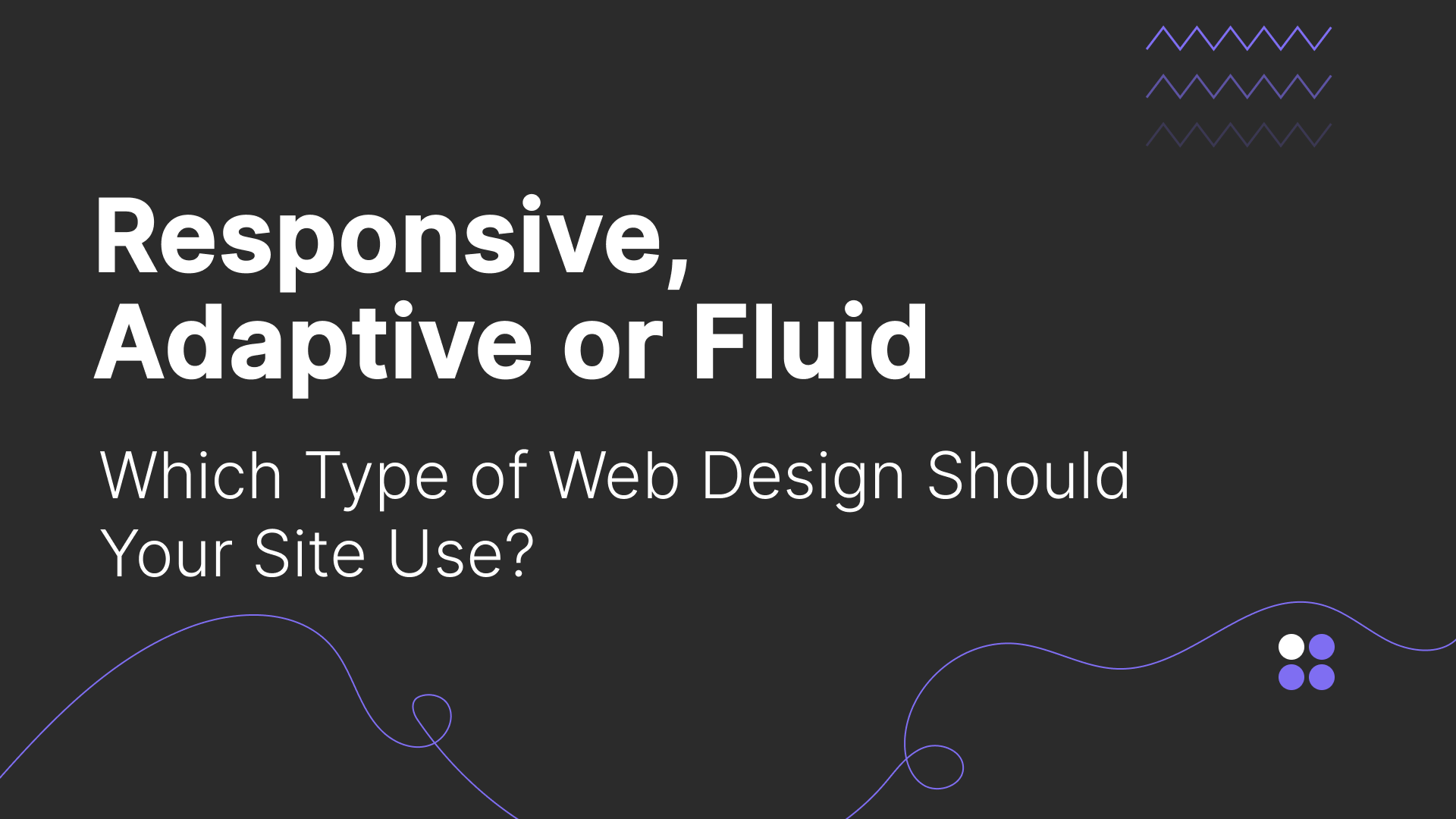
Responsive, Adaptive or Fluid: Which Type of Web Design Should Your Site Use?
Let’s imagine this situation. Someone visits your website on their smartphone during their morning commute. They have another look at it on their laptop at work. At the end of the day, they browse your site once more on their tablet at home. If your site looks perfect on one device but broken on another, you’ve just lost a potential client. Techtio’s web development specialists know that your site needs a user-friendly web design.
With over 62% of web traffic now coming from mobile devices, choosing the right design approach isn’t just important—it’s essential for your business success. But with terms like responsive, adaptive, and fluid floating around, how do you know which path to take? Let us clear this up for you.
What’s the Difference? Breaking Down the Big Three
Right now, developers across the globe use one of the following design principles to create websites that look good and work well on any device. These are:
Responsive Web Design: The Shape-Shifter
Think of responsive design as water—it flows and adapts to fit any container. A responsive website uses flexible grids and CSS media queries to adjust its layout based on screen size automatically. Whether someone visits on a tiny smartphone or a massive desktop monitor, the content rearranges itself seamlessly.
Key benefits:
- One website that works everywhere
- Cost-effective to maintain
- Google loves it for SEO
- Future-proof as new devices emerge
What is Adaptive Web Design: The Multi-Personality Approach
Adaptive design is like having multiple versions of your website, each tailored for specific screen sizes. Instead of one flexible layout, you create distinct designs for desktop, tablet, and mobile. The server detects the visitor’s device and serves the appropriate version.
Key benefits:
- Precise control over each device experience
- Faster loading times
- Highly optimised user interfaces
- Better performance on older devices
Fluid Design: The Stretchy Solution
Fluid design uses percentage-based measurements instead of fixed pixels. Your website elements stretch or shrink proportionally as the browser window changes size. It’s like having a website made of elastic—it expands and contracts but maintains its basic structure.
Key benefits:
- Smooth scaling across screen sizes
- Simple to implement
- Works well for content-heavy sites
- Maintains visual hierarchy
Responsive vs. Adaptive Web Design: The Ultimate Showdown
When comparing responsive vs. adaptive web design, there’s no universal winner—it depends on your specific needs:
Choose responsive when:
- You want one solution for all devices
- Budget and timeline are tight
- Your content is primarily text-based
- You need maximum SEO benefits
Choose adaptive when:
- You need pixel-perfect control
- Your audience uses specific devices
- Performance is absolutely critical
- You have complex functionality requirements
The Responsive vs Adaptive vs Fluid Verdict
Here’s the reality: most successful websites today use responsive design. Why? It offers the best balance of user experience, cost-effectiveness, and future-proofing. Major brands like Apple, Microsoft, and Amazon have all embraced responsive approaches.
However, the “best” choice depends on your unique situation:
- Small to medium businesses: Responsive design typically wins
- E-commerce with mobile-heavy traffic: Consider adaptive for key pages
- Content-focused sites: Fluid design might be sufficient
- Enterprise applications: Hybrid approaches often work best
What Makes Design Truly User-Friendly?
Regardless of which approach you choose, user-friendly web design must prioritise:
- Fast loading times across all devices
- Intuitive navigation that works with fingers and cursors
- Readable text without zooming required
- Accessible design for users with disabilities
- Consistent branding across all screen sizes
The technical approach matters, but the user experience is what drives results.
Making the Right Choice for Your Business
Still feeling overwhelmed? You’re not alone. The good news is that you don’t have to navigate this decision solo. The key is working with Techtio’s experts, who understand both the technical aspects and your business goals.
We take into consideration factors like:
- Your target audience’s device preferences
- Your content types
- Budget constraints
- Long-term growth plans
Sometimes, a hybrid approach combining elements from different methodologies creates the perfect solution.
Ready to Create a Website That Works Everywhere? Talk to Techtio!
Don’t let device compatibility issues cost you customers. Our responsive web design services help businesses create stunning, user-friendly websites that perform beautifully on every screen size.
Whether you need a complete website overhaul or want to optimise your current site, Techtio’s experienced team will guide you through the decision-making process and implement the perfect solution for your unique needs.
Contact us today to transform your online presence and boost your sales!
Have any question?
Do not hesitate to contact us. We’re a team of experts ready to talk to you.
Your Opinion Matters!
Your feedback is important to us and we would greatly appreciate your thoughts on this article! Please let us know if you liked it so we can improve our content in future:
Get in touch!
For any questions or concerns, you may contact us using the following details
- + (357) 25 256 865
- [email protected]


